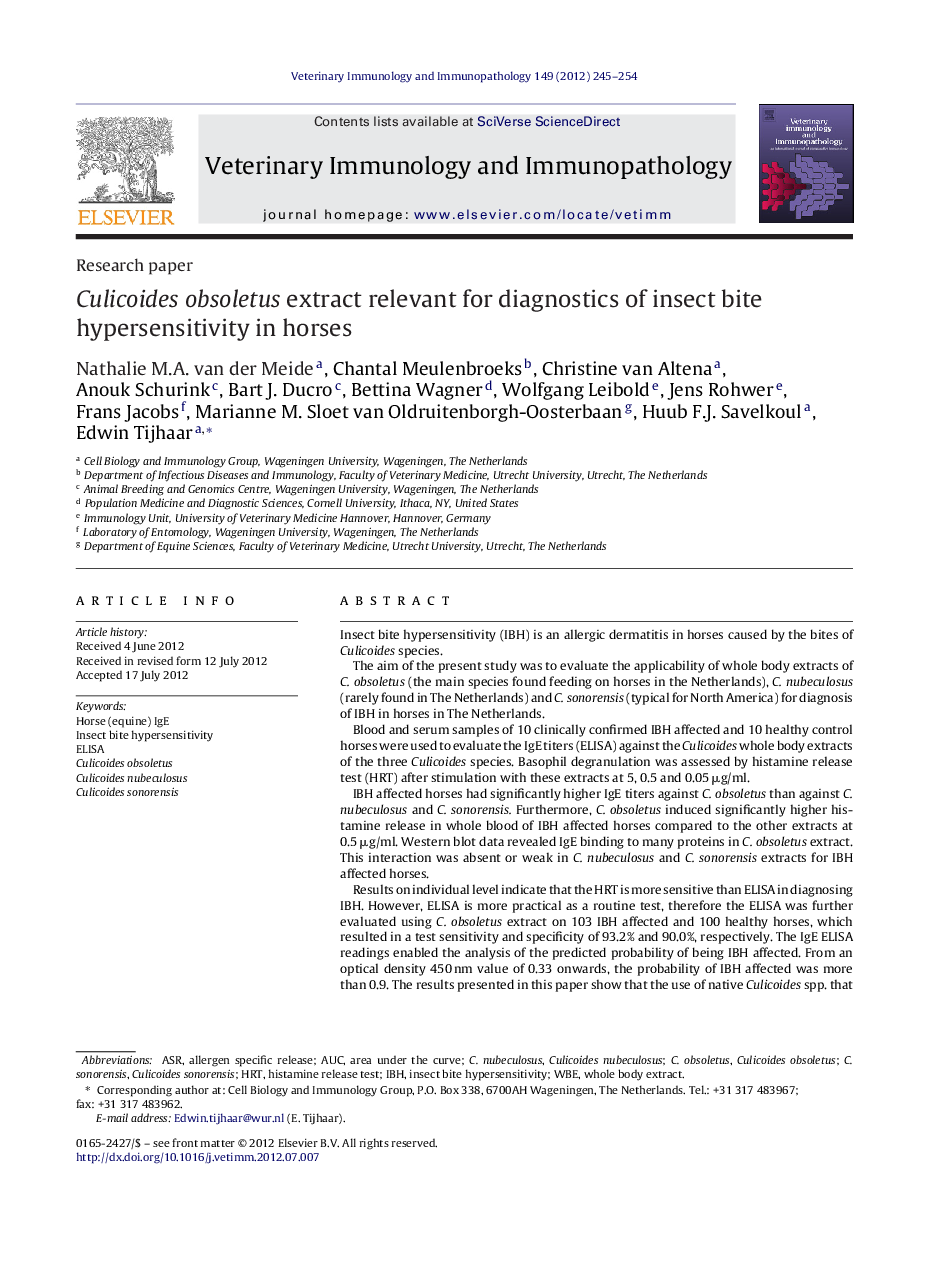| کد مقاله | کد نشریه | سال انتشار | مقاله انگلیسی | نسخه تمام متن |
|---|---|---|---|---|
| 2461830 | 1555053 | 2012 | 10 صفحه PDF | دانلود رایگان |

Insect bite hypersensitivity (IBH) is an allergic dermatitis in horses caused by the bites of Culicoides species.The aim of the present study was to evaluate the applicability of whole body extracts of C. obsoletus (the main species found feeding on horses in the Netherlands), C. nubeculosus (rarely found in The Netherlands) and C. sonorensis (typical for North America) for diagnosis of IBH in horses in The Netherlands.Blood and serum samples of 10 clinically confirmed IBH affected and 10 healthy control horses were used to evaluate the IgE titers (ELISA) against the Culicoides whole body extracts of the three Culicoides species. Basophil degranulation was assessed by histamine release test (HRT) after stimulation with these extracts at 5, 0.5 and 0.05 μg/ml.IBH affected horses had significantly higher IgE titers against C. obsoletus than against C. nubeculosus and C. sonorensis. Furthermore, C. obsoletus induced significantly higher histamine release in whole blood of IBH affected horses compared to the other extracts at 0.5 μg/ml. Western blot data revealed IgE binding to many proteins in C. obsoletus extract. This interaction was absent or weak in C. nubeculosus and C. sonorensis extracts for IBH affected horses.Results on individual level indicate that the HRT is more sensitive than ELISA in diagnosing IBH. However, ELISA is more practical as a routine test, therefore the ELISA was further evaluated using C. obsoletus extract on 103 IBH affected and 100 healthy horses, which resulted in a test sensitivity and specificity of 93.2% and 90.0%, respectively. The IgE ELISA readings enabled the analysis of the predicted probability of being IBH affected. From an optical density 450 nm value of 0.33 onwards, the probability of IBH affected was more than 0.9. The results presented in this paper show that the use of native Culicoides spp. that feed on horse, is important for improved diagnosis and that the described ELISA based on C. obsoletus can be used routinely to diagnose IBH in countries where this species is the main Culicoides feeding on horses.
Journal: Veterinary Immunology and Immunopathology - Volume 149, Issues 3–4, 15 October 2012, Pages 245–254